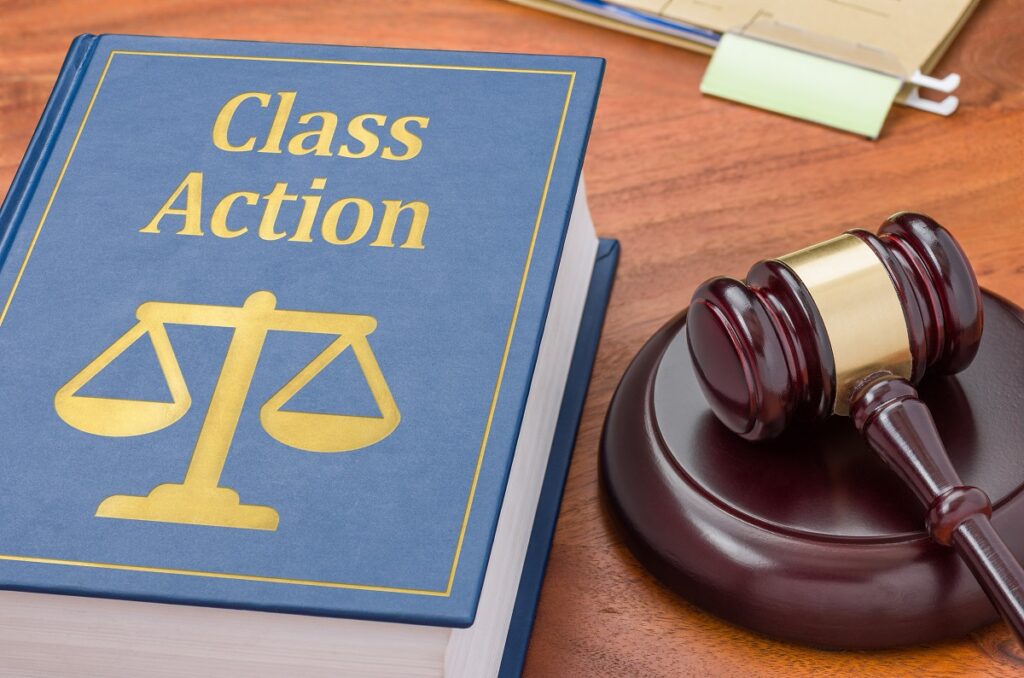What Are Class Actions and How Do They Function in Australia?
Class actions in Australia represent a form of legal proceeding where one or more individuals bring a lawsuit on behalf of a larger group sharing similar claims against the same defendant. This mechanism allows multiple people affected by the same wrongdoing—whether fraud, defective products, illegal conduct, or deceptive practices—to seek justice collectively rather than pursuing separate individual cases.
The importance of Class Actions lies in their ability to level the playing field between ordinary individuals and powerful corporations or entities. When a single person’s loss might be too small to justify the expense of litigation, class actions make it economically viable to pursue justice. They consolidate resources, reduce court congestion, and ensure consistent outcomes for people in similar situations.
How do these proceedings actually work? The process begins when representative plaintiffs file a claim in either the Federal Court or State Supreme Courts. These lead plaintiffs act on behalf of all affected individuals who meet specific criteria related to the case. The court then oversees the entire process to ensure fairness and proper management.
Australia’s distinctive opt-out model automatically includes all eligible individuals in the class action unless they actively choose to remove themselves before a court-specified deadline. This approach differs from opt-in systems used in other countries and significantly expands access to justice for those who might not otherwise take legal action.
Group members benefit from this arrangement without needing to actively participate in the litigation itself. Legal teams handle the complex work whilst affected individuals await the outcome. Funding typically comes through no win no fee arrangements with law firms or third-party litigation funders who cover costs in exchange for a percentage of any settlement or judgment.
The court maintains strict supervision throughout, ensuring the representative plaintiffs adequately represent the group’s interests and that all procedures follow proper legal standards.
What Are the Key Features That Define Class Actions in Australia?
Australian class action features are built on three fundamental requirements that distinguish them from individual litigation. These structural elements ensure the proceedings serve genuine collective interests while maintaining judicial efficiency.
1. The Seven-Person Threshold
A class action must involve at least seven people with claims against the same defendant(s). This minimum requirement prevents misuse of the collective proceedings mechanism for disputes that could be resolved through standard litigation. The claimants’ grievances must stem from related events or circumstances, creating a natural connection between their experiences.
2. Common Legal Issues Requirement
The claims must share at least one substantial issue of law or fact. This commonality forms the backbone of the class action, allowing the court to address shared questions that affect all group members simultaneously. Common legal issues might include whether a product was defectively designed, whether a company engaged in misleading conduct, or whether contractual terms were breached in a systematic way.
3. Jurisdictional Framework
Class actions primarily proceed through the Federal Court of Australia or State Supreme Courts. The Federal Court handles matters involving federal law, corporations, and cross-border disputes. State Supreme Courts manage class actions relating to state-based legislation and local matters. This dual-court structure provides appropriate venues depending on the nature and scope of the claims being pursued.
How Does the Opt-Out Model Operate Within Australian Class Actions?
Does joining a class action require active registration in Australia?
No. The opt-out model Australia employs automatically includes all individuals who fit the defined class criteria without requiring them to register or take any action. Once a class action commences, anyone who suffered losses from the same events or circumstances becomes a group member by default.
What happens if someone wants to exclude themselves?
The court sets a specific deadline—known as the opt-out date—by which affected individuals must formally remove themselves from the class action participation. Those who miss this deadline remain bound by whatever outcome the court decides, whether favourable or not. People typically opt out when they:
- Prefer to pursue their own independent legal claim
- Disagree with how the representative plaintiff is handling the case
- Want to avoid potential cost orders if the class action fails
- Have unique circumstances requiring individual attention
How do people learn about their inclusion?
Courts require representative plaintiffs to notify potential group members through multiple channels. These notifications explain the nature of the claim, who qualifies as a group member, the opt-out deadline, and the implications of remaining in or leaving the class action. Notices appear in newspapers, on television and radio, through online advertisements, and sometimes via direct mail to known affected parties.
Who Is Eligible to Join a Class Action in Australia?
Eligibility for class actions depends on whether your claim shares common circumstances with other group members Australia. You automatically become part of the class if your situation matches the defined group criteria—typically involving the same defendant, similar timeframe, and comparable harm or loss. The representative plaintiff and their legal team establish these parameters when filing the case.
To qualify as a group member, you must:
- Have suffered loss or damage from the same conduct or circumstances as other claimants
- Fall within the defined class description (often based on dates, products, or services involved)
- Not have opted out before the court-specified deadline
- Meet any specific criteria outlined in the court-approved class definition
Group members carry minimal responsibilities compared to traditional litigation. You don’t need to attend court hearings, provide evidence (unless specifically requested), or actively participate in legal strategy. Your role remains largely passive—you’re bound by court decisions and any approved settlements unless you’ve opted out.
The representative plaintiff bears the primary burden of advancing the case. They must act in the best interests of all group members and cannot settle without court approval. This structure protects your interests whilst allowing you to benefit from collective legal action without the stress and expense of individual proceedings.

What Advantages and Limitations Do Individuals Face When Joining Class Actions?
Do class action participants save money on legal costs?
The benefits of class actions centre on shared litigation expenses. Group members typically pay nothing upfront, as legal costs are distributed across all participants or covered by litigation funders. This arrangement makes pursuing claims financially viable for people who couldn’t afford individual lawsuits against large corporations or institutions.
Can group members remain passive throughout the proceedings?
Participants enjoy the ability to pursue claims without active involvement in the litigation process. The representative plaintiff and their legal team handle all court appearances, document preparation, and strategic decisions. Group members simply wait for updates about the case progress and any potential settlement offers.
What restrictions apply to class action participants?
The limitations class action participation brings include reduced control over case strategy and settlement decisions. Group members cannot direct how lawyers conduct the case or reject settlements the court approves. Any compensation awarded gets divided among all participants, often resulting in smaller individual payouts than might be achieved through separate litigation.
Are there risks to remaining in a class action?
Participants who stay in the class action forfeit their right to pursue independent legal action on the same matter. The court’s final decision binds all group members, whether favourable or not. Those dissatisfied with how the case proceeds must opt out before the deadline to preserve their individual legal rights.
How Are Class Actions Funded in Australia and What Are the Cost Implications for Participants?
What funding options exist for Australian class actions?
No win no fee arrangements allow participants to join class actions without upfront legal costs. Law firms agree to defer their fees until the case concludes successfully, taking payment from any settlement or judgment awarded. If the case fails, group members typically owe nothing to their lawyers.
Litigation funding Australia operates through specialised third-party funders who finance the entire legal process. These commercial entities cover:
- Legal fees and court costs
- Expert witness expenses
- Administrative and case management costs
- Any adverse cost orders if the case fails
What do participants pay from settlements?
Third-party funders receive a predetermined percentage of any successful outcome, usually between 20-40% of the total recovery. This commission covers their investment risk and operational costs. Group members receive the remaining amount after deducting:
- Funder’s commission
- Legal fees (if not already covered)
- Administrative expenses
- Court-ordered costs
Do group members face financial risks?
The opt-out model protects passive participants from most financial exposure. Those who remain in the class action rarely face personal liability for legal costs. The representative plaintiff and litigation funder typically bear the financial risks, including potential adverse cost orders if the defendant succeeds.
How Does the Court Ensure Fairness and Proper Management Throughout Australian Class Actions?
How does judicial oversight protect group members?
Courts actively supervise class actions from initiation through resolution, exercising broad powers to ensure proceedings serve the interests of all group members. Judges scrutinise whether the representative plaintiff adequately represents the class and whether the claims share sufficient commonality to proceed collectively.
What specific management tools do courts employ?
The court requires regular case management hearings where progress is reviewed and directions are issued. Judges examine proposed settlements carefully, refusing approval if terms appear unfair or inadequate. They also assess legal costs to prevent excessive deductions from any compensation awarded to group members.
How are individual group members’ interests safeguarded?
Courts mandate comprehensive notice procedures so affected individuals understand their rights and options. These notifications must clearly explain:
- The nature of the claims being pursued
- Potential outcomes and their implications
- Deadlines for opting out
- Expected timelines for resolution
Judges may appoint independent experts to review settlement proposals and provide objective assessments. They hold approval hearings where group members can voice concerns about proposed resolutions. The court retains authority to modify settlements or reject them entirely if fairness standards aren’t met, ensuring equitable treatment regardless of individual participation levels.

Conclusion
Australian class actions are a powerful tool for collective legal action. They allow multiple individuals who have suffered similar harm from the same defendant to come together and seek justice as a group. This mechanism overcomes traditional obstacles to justice, such as high costs, complicated procedures, and the fear of facing large corporations alone.
In class actions, the opt-out model ensures that access to justice is available to all, while the court’s role in overseeing the process guarantees fairness. Whether through no win no fee agreements or funding from third-party litigation funders, class actions make legal remedies more accessible to everyone. Group members can pursue valid claims without having to bear the entire burden of litigation costs or actively participate in the proceedings.
Class actions work by harnessing the power of collective action. In Australia, anyone with a related claim against the same defendant can join in their pursuit of justice.
See Also: How does a conveyancer in Sydney check property contracts for legal accuracy?
FAQs – Class Actions in Australia
A class action is a legal proceeding where one or more individuals file a lawsuit on behalf of a larger group with similar claims against the same defendant, allowing collective pursuit of justice.
Class actions begin when representative plaintiffs file a claim in the Federal Court or a State Supreme Court. These lead plaintiffs act on behalf of all eligible group members who share related claims.
Australia uses an opt-out system, meaning all eligible individuals are automatically included in the class action unless they actively choose to opt out by a court-specified deadline.
Anyone whose loss or damage aligns with the defined class criteria—such as the same defendant, timeframe, and type of harm—can participate unless they opt out.
No. Group members can remain largely passive. The representative plaintiffs and their legal teams handle court appearances, strategy, and paperwork while members await outcomes.
Benefits include reduced legal costs, shared litigation expenses, and the ability to pursue claims against powerful entities that might be too costly individually.
